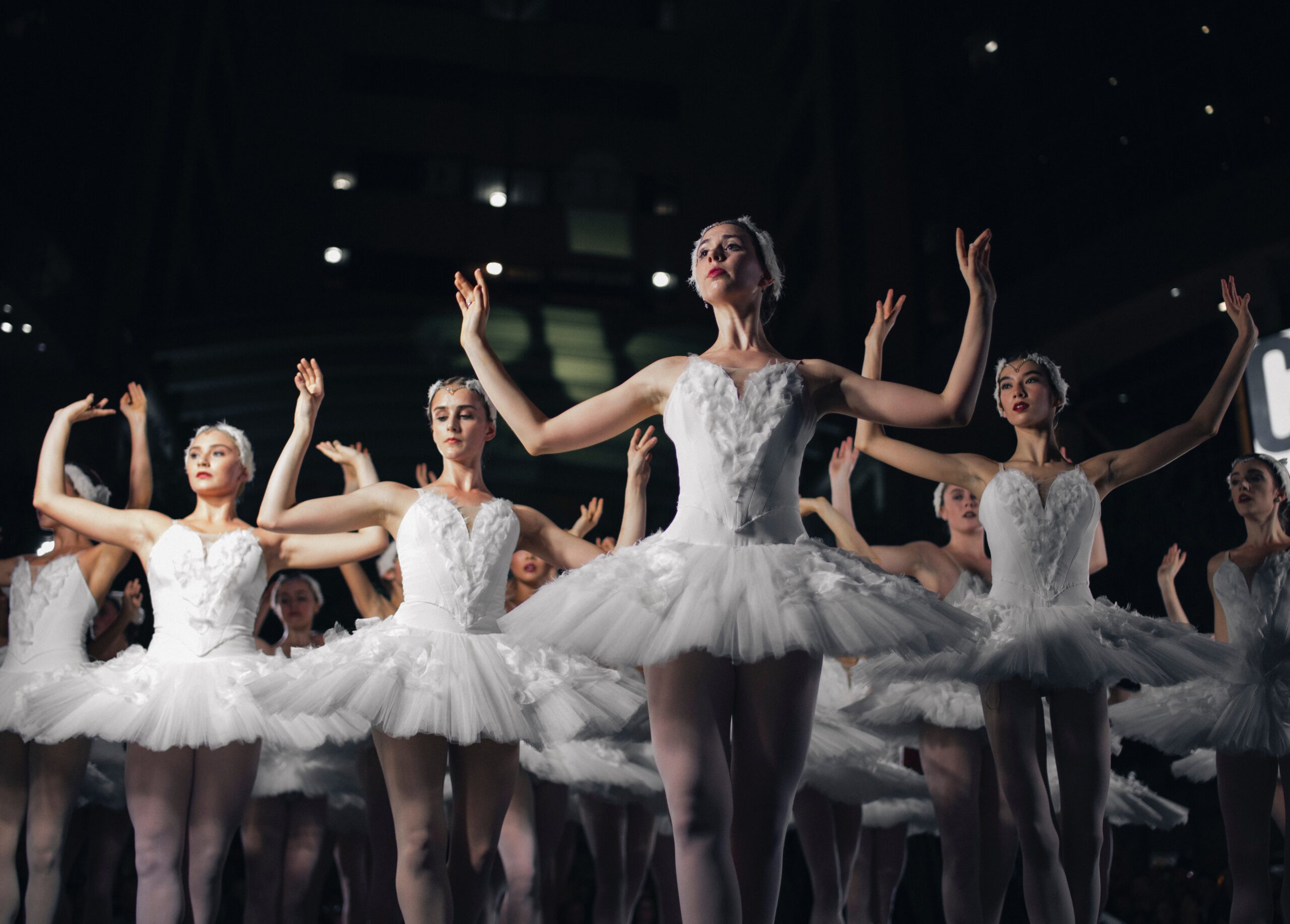How Long Is the Nutcracker Ballet? Unraveling the Magic of the Performance

As the holiday season approaches, the air fills with the sweet melody of Tchaikovsky’s famous composition, signaling the return of a cherished tradition: The Nutcracker Ballet. This enchanting performance, a staple of festive celebrations, weaves a tale of wonder and fantasy that transcends generations. Audience members of all ages find themselves captivated by the twirling sugar plum fairies and the valiant battles against the Mouse King. But one question often lingers in the minds of those planning to attend this magical spectacle: How long is The Nutcracker Ballet? Whether you’re a seasoned ballet enthusiast or a curious newcomer, understanding the duration of the performance is key to immersing yourself fully in the land of sweets and snowflakes. Join us as we explore the length of this timeless ballet and what makes it an unmissable event each year. 🎭⏰
- How Long Is the Nutcracker Ballet? Unraveling the Magic of the Performance
- What Do I Need To Know About The Nutcracker Before Seeing İt?
- What Is a Good Age To See The Nutcracker?
- How Long Is The Average Ballet?
- How Long Is The Nutcracker Ballet Specifically?
- Is There Singing in The Nutcracker?
- What Do You Wear To Nutcracker Ballet?
PNB’s rendition of The Nutcracker spans two hours, with a 25-minute intermission strategically placed within the performance. The initial act unfolds over 52 minutes, encompassing the Party Scene, Battle Scene, and Snow Scene. Act II follows, comprising 46 minutes of captivating moments, commencing with the iconic Dance of the Sugar Plum Fairy and progressing through Clara and the Prince’s enchanting adventures in the Land of Sweets. While the first act predominantly drives the narrative forward, the second act captivates the audience with Tchaikovsky’s renowned musical compositions, complemented by exquisite performances from both student and professional ballet dancers.
What Do I Need To Know About The Nutcracker Before Seeing İt?
Nutcracker, a timeless Christmas tale, unfolds as a fairy tale ballet that captivates audiences with its enchanting narrative. Conceived and premiered during the festive season of 1892, this ballet continues to hold its place as the most beloved Christmas dance performance.
At its core, Nutcracker narrates the story of a young girl’s magical Christmas Eve and her profound awakening to the wonders of the world around her. While the ballet traces its origins to the late 19th century, it wasn’t until nearly a century later that it truly blossomed into a cherished Christmas tradition.
In 1995, the National Ballet’s former artistic director, James Kudelka, breathed new life into Nutcracker with a refreshing rendition characterized by vigor, wit, and a modern sensibility. This revitalized version stands as a timeless model of Christmas spirit, resonating as a holiday gem.
For over 125 years, Nutcracker has graced stages worldwide, becoming a cherished holiday tradition. The ballet’s narrative revolves around the personal journey of a young girl named Clara, unfolding against the backdrop of a magical Christmas.
What makes Nutcracker immensely popular is its seamless blend of adolescent dreams, magic, hope, and fable, infused with elements of comedy. This unique combination contributes to its widespread appeal, making it a must-watch dance performance during the holiday season. Notably, Nutcracker marked a significant departure from traditional dance forms by taking childhood themes seriously, adding a layer of depth to the ballet.
For aspiring young ballet dancers, performing in “The Nutcracker” is a dream come true. This child-friendly ballet offers numerous roles for children, creating significant opportunities for budding actors and dancers alike. As a result, ballet companies routinely host open auditions for young talents, providing a platform for them to showcase their skills and be part of this magical production during the holiday season.
What Is a Good Age To See The Nutcracker?
For an enjoyable and relaxed experience for all attendees, we suggest that children be a minimum of 5 years old to attend Nutcracker. It’s important to note that we do not permit entry for children under 3, including infants in arms.
When it comes to Repertory Season performances, which may include story ballets, we recommend a minimum age of 8 for children. These programs often extend beyond two and a half hours, making them less suitable for younger children. Just like with Nutcracker, children under 3, including babes in arms, are not permitted.
Every individual, regardless of age, must have a ticket for entry into the Opera House. Children must be accompanied by an adult, and there is no provision for lap sitting. This policy is in place to ensure a safe and enjoyable experience for all our patrons.
How Long Is The Average Ballet?
The duration of a ballet performance can vary widely depending on the specific production, the choreography, the number of acts, and the inclusion of intermissions. On average, a full-length ballet can run anywhere from about one and a half to three hours. This time frame typically includes one or two intermissions, which are often 15 to 20 minutes long each.
For example, classical ballets like “Swan Lake,” “The Sleeping Beauty,” and “Giselle” can be on the longer side, often approaching three hours with intermissions included. These ballets are usually divided into multiple acts, with elaborate set changes and a detailed storyline.
Contemporary ballets or mixed repertory evenings, where several shorter works are performed in one program, might be shorter overall. Each piece within a mixed repertory could range from 20 to 45 minutes, with the entire evening adding up to a similar length as a full-length classical ballet, including breaks.
It’s always a good idea to check the specific details provided by the ballet company or venue to know the exact length of the performance you plan to attend.
How Long Is The Nutcracker Ballet Specifically?
The Nutcracker ballet, one of the most beloved holiday traditions, typically runs for about two hours. This duration includes an intermission between the two acts that compose the ballet. Each act is approximately 40 to 50 minutes long, with intermissions usually lasting about 15 to 20 minutes.
The exact length can vary slightly depending on the production, the tempo at which the music is played, and the length of any pauses or intermissions. Some versions of “The Nutcracker” may also include additional entertainment or presentations before the show or during the intermission, which can extend the overall experience.
For those planning to attend “The Nutcracker,” it’s always a good idea to check with the specific ballet company or venue for the precise timing of their production.
Is There Singing in The Nutcracker?
The Nutcracker ballet is renowned for its enchanting musical composition, orchestrated for a grand ensemble. The orchestral arrangement comprises a diverse array of instruments, creating a rich and evocative soundscape. The instrumental lineup includes 3 flutes (2nd and 3rd doubling piccolos), 2 oboes, English horn, 2 clarinets (in A, B-flat), bass clarinet (in A, B-flat), 2 bassoons, 4 horns (in F), 2 trumpets (in A, B-flat), 3 trombones, tuba, 4 timpani, triangle, tambourine, cymbals, bass drum, tam tam, glockenspiel, castanets, toy instruments (rattle, trumpets (in C), drums, 2 rabbit drummers, cuckoos, quails, cymbals), celesta (or piano), and 2 harps, accompanied by violins I, violins II, violas, cellos, and double basses.
The Waltz of the Snowflakes in Act I, No. 9, features a wordless chorus, as directed by Tchaikovsky. He specified that the chorus should consist of 12 sopranos and 12 altos, preferably youths from a choir. However, if unattainable, an operatic chorus with 24 voices could also perform the choral part.
In Act I, No. 5, toy instruments make an appearance. Tchaikovsky indicated in the score that these instruments align with those used in the first scene of The Queen of Spades. Their play should coincide with the cues provided by the children in the scene. Tchaikovsky elaborated on the Rattle (Schnarre), stating it is akin to those used in children’s symphonies by composers like Haydn and Romberg, and it should be readily available in musical stores.
As Act II unfolds, specifically in No. 10, the opening Scene, Tchaikovsky emphasized that the artist performing the Celesta part should be a proficient pianist. In the Dance of the Sugar-Plum Fairy (No. 14, Var. 2), he made provisions for cases where the celesta might be unavailable, allowing for the part to be played on the piano.
What Do You Wear To Nutcracker Ballet?
The Nutcracker ballet not only dazzles with its performance but also sets the stage for a stylish audience. Many attendees opt for sophisticated attire, adding an extra layer of elegance to the occasion. However, elegance doesn’t have to come at the expense of comfort. With a few style tips, you can strike the perfect balance between chic and comfort, ensuring an enjoyable experience throughout the performance.
So, what’s the ideal outfit for the Nutcracker ballet? Consider these general guidelines to help you curate your ensemble:
Dressy Casual: While there isn’t a stringent dress code, the event tends to lean towards the dressy side of casual. You need not don a full-length ball gown or a tuxedo (unless that’s your preference), but steering clear of overly casual attire is advisable to blend in seamlessly with the ambiance.
Prioritize Comfort: Keep in mind that you’ll be seated for an extended period, so opt for an outfit that exudes both style and comfort. Avoid tight clothing or high heels that might cause discomfort over time.
Layering: Theatres can be on the cooler side, so consider bringing a chic wrap or jacket that complements your outfit while keeping you cozy.
Now, let’s delve into more specific clothing recommendations for women, men, and children attending the Nutcracker ballet.